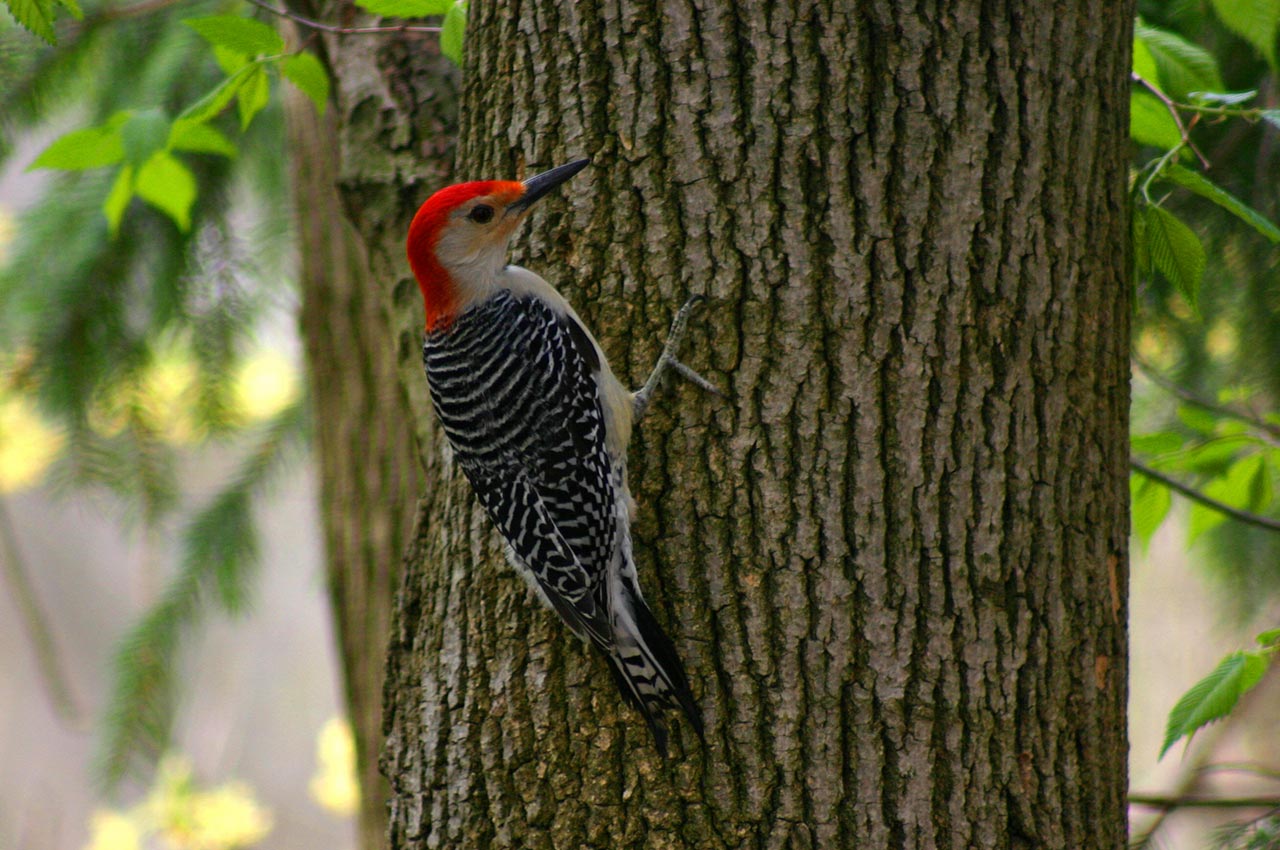Introducing the Tricks of Woodpeckers: Habits, Habitat, and More
Woodpeckers, with their one-of-a-kind habits and specialized adaptations, have long amazed researchers and nature fanatics alike. By revealing the secrets bordering woodpeckers' behavior and environment selections, a much deeper understanding of these avian wonders emerges, supplying a peek into their interesting world.
Woodpecker Behavior Insights
In taking a look at woodpecker actions, a fascinating screen of specialized skills and adaptations emerges, clarifying their impressive eco-friendly particular niche - Woodpeckers in Florida. Woodpeckers, known for their distinct drumming on trees, possess a range of behavior qualities that contribute to their survival and success in their setting. One key habits is their drumming, which serves numerous objectives such as interaction, developing area, drawing in companions, and locating food resources. This balanced pecking also showcases their remarkable toughness and endurance, as they can hammer away constantly at broadband without causing injury to themselves.
Additionally, woodpeckers exhibit an one-of-a-kind feeding behavior defined by their ability to extract pests from tree bark utilizing their specialized beaks. Their lengthy, barbed tongues aid in catching target, while their strong neck muscle mass provide stability and precision throughout pecking activities. This feeding method enables woodpeckers to accessibility covert insect larvae and extract them with impressive efficiency.
Environment Preferences and Selection
What aspects influence the habitat preferences and choice of woodpeckers? One important aspect affecting woodpecker habitat selection is the accessibility of appropriate nesting websites. Woodpeckers normally favor woodlands with a mix of fully grown trees that supply sufficient possibilities for cavity excavation.
In addition, woodpeckers reveal a preference for habitats with a plentiful supply of food resources. They are mostly insectivorous, feeding on beetles, ants, larvae, and other insects located in decaying timber or tree bark. Woodpeckers tend to favor wooded areas with a diverse insect population to meet their dietary needs.
In addition, the existence of dead or decaying trees is one more crucial variable in woodpecker habitat choice. These trees not just offer food resources however likewise use ideal substrate for tooth cavity excavation. Dead trees are important for the maintenance of healthy woodpecker populations, as they play an essential duty in the woodpeckers' life process and environment characteristics.
Feeding Routines and Diet Regimen Make-up
Woodpeckers show a specialized feeding habits concentrated on image source foraging for insects within different habitats. Their diet regimen mainly contains insects such as beetles, ants, caterpillars, and crawlers, which they locate by touching on tree bark and listening for the audio of movement inside. Woodpeckers utilize their strong beaks to drill right into the timber and their lengthy, barbed tongues to draw out victim from holes. In enhancement to insects, woodpeckers also take in tree sap, fruits, nuts, and seeds, adding selection to their diet regimen relying on the period and availability of food sources.
The foraging methods of woodpeckers are well-adapted to their arboreal lifestyle. Woodpeckers play an important function in maintaining the health and wellness of woodlands by controlling insect populaces and aiding in the check these guys out decomposition of timber.
Drumming Appears and Interaction
Utilizing fast drumming audios on numerous surface areas, woodpeckers use a distinctive form of interaction to indicate region boundaries and attract mates. This drumming habits is not only a method of communication however additionally offers as a means for woodpeckers to establish their existence within a specific area. The intensity, rate, and pattern of the drumming can communicate important details to other woodpeckers in the area.
Woodpeckers use drumming noises to introduce their existence in a region and to advise off potential burglars. The loud and repeated nature of the drumming serves as a clear signal to other woodpeckers that the area is currently claimed. This assists in lowering conflicts and lessening physical confrontations between people.

Survival Adaptations and Specialized Anatomy

Final Thought
In verdict, woodpeckers display unique habits, such as drumming noises for interaction, and have specialized makeup for survival in their selected environments. Their feeding practices and diet plan structure better show their versatility to numerous environments. By understanding these facets of woodpeckers, researchers and you can look here preservationists can better shield and preserve these remarkable birds and their ecological communities.